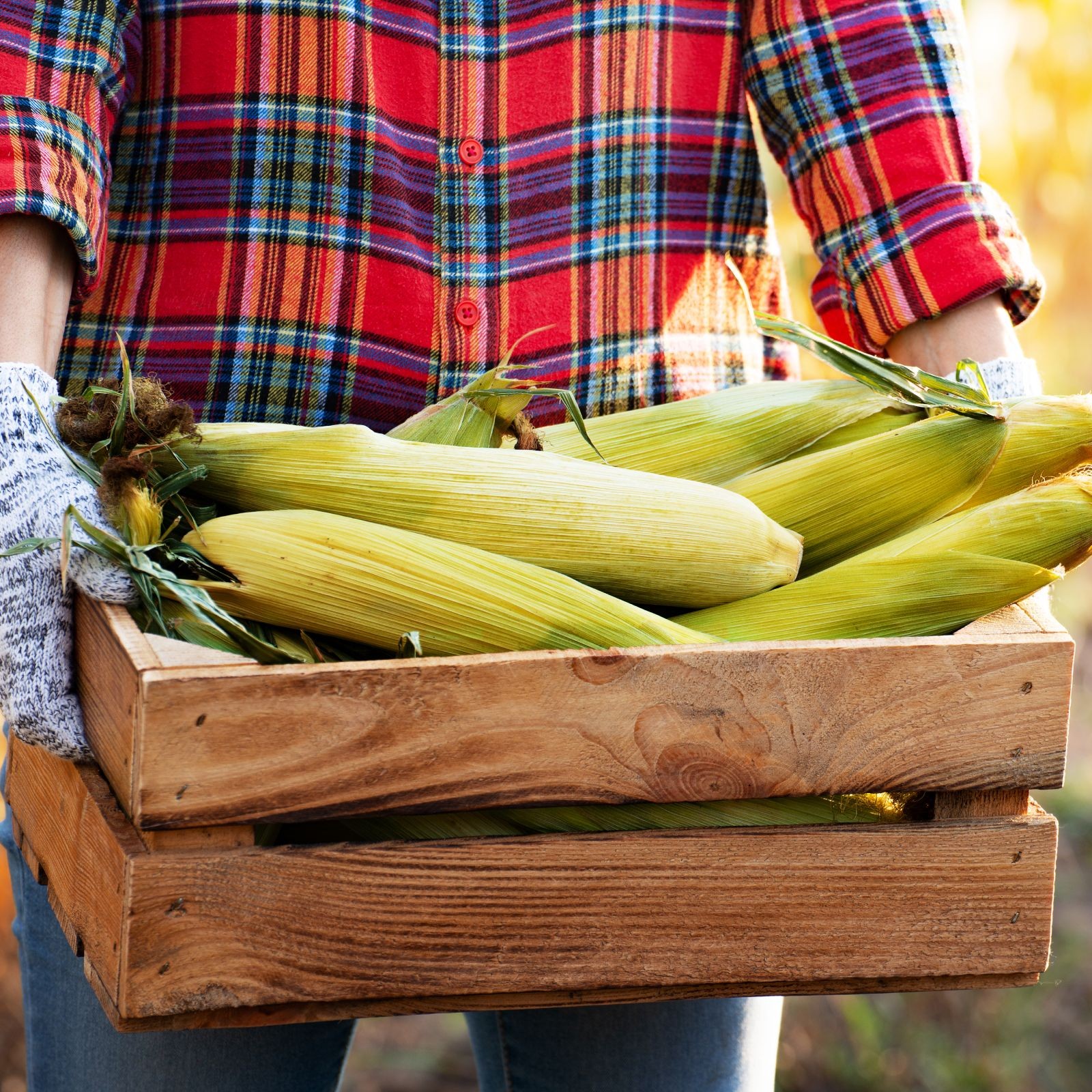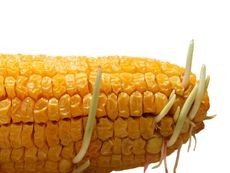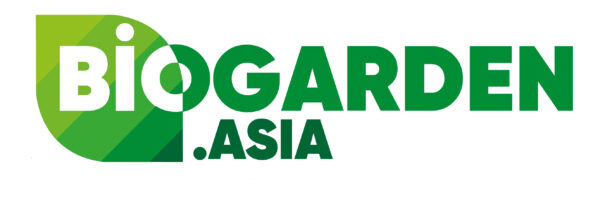No products in the cart.
NEWS
Expert Guide to Growing Corn: Planting, Care, and Troubleshooting
Ah, the undeniable taste of fresh corn on the cob, especially when it comes straight from your own garden! Growing corn can be one of the most rewarding experiences for a home gardener, offering not just delicious produce but also tall, impressive stalks that add structure to the landscape. Whether you dream of sweet corn for summer feasts or drying varieties for decorative purposes, understanding the fundamentals of how to grow corn is your first step towards a successful harvest. This comprehensive guide, drawing on extensive agricultural knowledge and practical experience, will walk you through everything from selecting the right variety to tackling common challenges, ensuring you get the most from your corn patch.
Getting Started: Choosing Your Corn and Location
Before you even think about planting, consider what kind of corn you want to grow. The world of corn (Zea mays) is diverse!
- Sweet Corn: The most popular choice for home gardens, bred for high sugar content. Varieties range from super sweet to extra sweet, with different colors (yellow, white, bicolor) and maturity times.
- Field Corn (Dent Corn): High in starch, used for animal feed, cornmeal, and other processed goods.
- Popcorn: Has a hard kernel that explodes when heated.
- Flint Corn: Known for hard kernels, often used for decorative purposes or ground into cornmeal.
Selecting the right variety for your climate and desired use is crucial. Pay attention to days to maturity listed on seed packets.
Site selection is paramount for corn. Corn needs:
- Full Sun: At least 6-8 hours of direct sunlight per day.
- Good Drainage: Waterlogged soil is detrimental.
- Rich Soil: Corn is a heavy feeder. Incorporating plenty of organic matter (like compost or well-rotted manure) before planting is highly recommended to provide essential nutrients and improve soil structure.
Planting Your Corn Patch
Timing is critical for planting corn. Wait until the danger of the last frost has passed and the soil temperature has reached at least 50°F (10°C) for germination, ideally closer to 60-65°F (15-18°C) for sweet corn. Planting too early in cold, wet soil can lead to poor germination and increased susceptibility to seed rot.
Corn is primarily wind-pollinated. For good kernel development on every ear, you need multiple plants pollinating each other effectively. Planting in blocks (several short rows side-by-side) rather than one long row is highly recommended to maximize pollination chances.
Sow seeds about 1 inch deep and 4-6 inches apart. Once seedlings are established, thin them to about 8-12 inches apart, depending on the variety, to give each plant adequate space to grow and access resources.
 Woman holding corn harvest in basket
Woman holding corn harvest in basket
Essential Corn Care for Robust Growth
Consistent care throughout the growing season is key to a bountiful corn harvest.
- Watering: Corn needs consistent moisture, especially during tasseling, silking, and ear development stages. Water deeply if rainfall is insufficient, aiming for about 1 inch of water per week. Lack of water during critical periods can lead to poor pollination and underdeveloped ears.
- Fertilizing: As heavy feeders, corn plants benefit from supplemental feeding. Beyond incorporating organic matter at planting, side-dress with a balanced fertilizer or a nitrogen-rich one when plants are about knee-high and again when tassels appear. Healthy soil, supported by beneficial microbes and quality organic inputs (like those from Biogarden.asia), creates a robust foundation for plant growth and nutrient availability.
- Weeding: Keep the area around young corn plants free of weeds, which compete for water and nutrients. Be careful not to damage shallow roots when cultivating.
- Pollination Assistance: While block planting helps, in small gardens or during poor weather, hand pollination can increase yield. This involves collecting pollen from the male tassels and dusting it onto the silks of the female ears.
- Managing Tillers: Corn plants may produce ’tillers’ or ‘suckers’ – side shoots from the base. In most garden situations, removing these is unnecessary and can even reduce yield. They contribute to photosynthesis and plant vigor.
 Ripe Corn Plants
Ripe Corn Plants
Harvesting Your Sweet Reward
Knowing when to harvest corn is crucial for peak sweetness and flavor, especially with sweet corn. Harvest too early, and kernels will be watery; too late, and sugars turn to starch.
Look for these signs:
- Silks: The silks emerging from the end of the ear will turn brown and dry.
- Ear Firmness: The ear will feel plump and firm.
- Kernel Test: Gently peel back a small section of the husk and puncture a kernel with your fingernail. A ripe sweet corn kernel will release a milky white liquid. If it’s clear, it’s too early. If it’s thick or doughy, it’s likely past its prime.
Harvest by snapping the ear downwards and twisting it away from the stalk. Harvest sweet corn in the cooler part of the day, ideally morning, for the best flavor.
 Closeup on an ear of yellow corn with several sprouts growing from it
Closeup on an ear of yellow corn with several sprouts growing from it
Troubleshooting Common Corn Problems
Like any crop, corn can face challenges from pests and diseases. Understanding the signs and general management strategies is vital.
- Seedling Issues: Poor germination, damping off, or stunted, sickly seedlings can occur due to cold, wet soil, or fungal pathogens causing seed rot or seedling blight. Ensuring proper planting depth, waiting for warm soil, and using healthy seed can help.
- Fungal Diseases: Corn is susceptible to various fungi, including rust, downy mildew, Physoderma brown spot, ear rot, and stalk rot. These often manifest as spots, lesions, or rotting on leaves, stalks, or ears. Conditions like warm, wet weather favor their spread. Management includes choosing resistant varieties, ensuring good air circulation (proper spacing), practicing crop rotation, and cleaning up plant debris after harvest. In severe cases, targeted treatments might be considered, but focusing on prevention through healthy soil and plant vigor is the first line of defense.
- Growth Abnormalities: Sometimes corn tassels early (before the plant is full height) or plants are stunted. This is often a sign of stress from drought, nutrient deficiency, or disease (like corn stunt disease). Addressing underlying issues like watering and fertility is key.
- Tillers: While generally harmless, excessive tillering might occasionally be linked to stress or specific varieties.
 Rotting Sweet Corn Plant Leaf
Rotting Sweet Corn Plant Leaf
Beyond the Cob: Other Corn Possibilities
Growing corn isn’t just about sweet corn on the grill.
- Baby Corn: These are simply immature ears harvested very early. You can grow your own by planting standard corn varieties and harvesting the small ears that form on the side tillers or the main stalk before pollination occurs.
- Creative Uses: Beyond food, corn has unique applications. Field corn can be grown for crafting corn mazes. The dried husks from any corn variety can be used in cooking (like for tamales) or various crafts. Popcorn varieties offer a fun way to enjoy your homegrown harvest differently. You can even experiment with growing corn from a dried cob, though results may vary depending on how the original corn was pollinated.
 Corn Tassels
Corn Tassels
Conclusion
Growing corn can be a deeply satisfying endeavor, connecting you to the cycles of nature and providing a delicious reward. By selecting the right variety, preparing your soil, planting correctly, and providing consistent care, you can overcome common challenges and enjoy the taste of homegrown corn. Focus on building healthy soil, understanding your plants’ needs, and being observant for any signs of trouble. Embark on your corn-growing journey and savor the unique flavor of ears picked fresh from your own patch! Explore the possibilities for nurturing healthy plant growth with quality inputs, perhaps starting with products designed to support vibrant soil and robust plant development like those available from Biogarden.asia.



